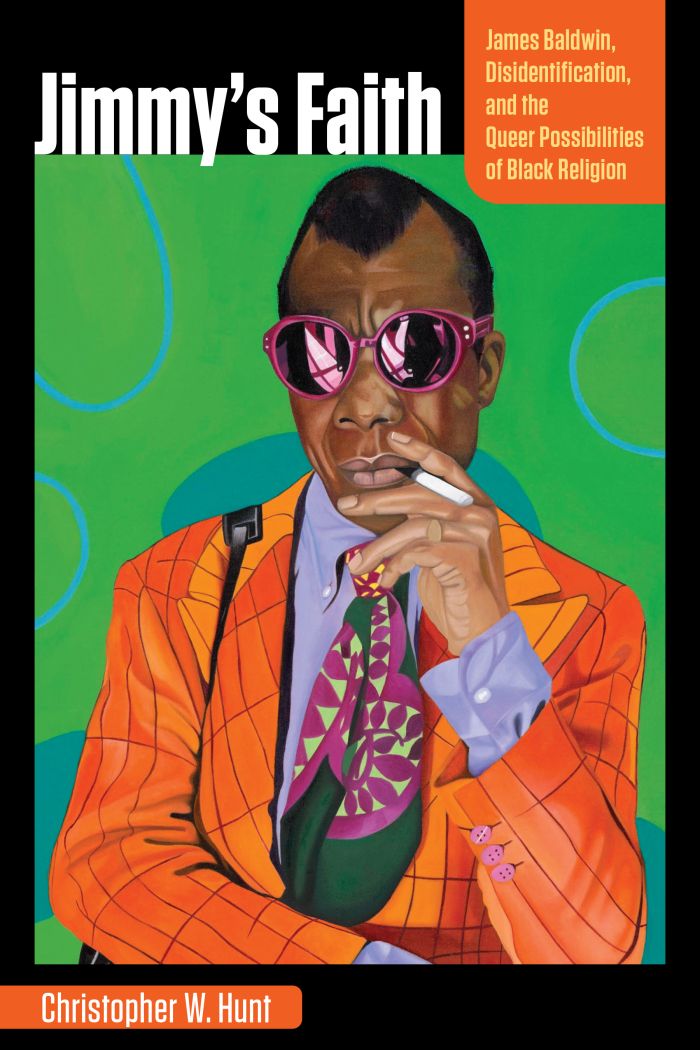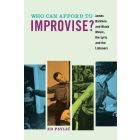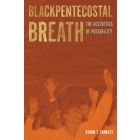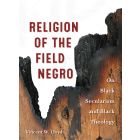Jimmy's Faith
James Baldwin, Disidentification, and the Queer Possibilities of Black Religion

This book can be opened with

QSpirit Top 24 LGBTQ Christian Books of 2024
A novel approach to understanding the work of James Baldwin and its transformative potential
The relationship of James Baldwin’s life and work to Black religion is in many ways complex and confounding. What is he doing through his literary deployment of religious language and symbols?
Despite Baldwin’s disavowal of Christianity in his youth, he continued to engage the symbols and theology of Christianity in works such as The Amen Corner, Just Above My Head, and others. With Jimmy’s Faith, author Christopher W. Hunt shows how Baldwin’s usage of those religious symbols both shifted their meaning and served as a way for him to build his own religious and spiritual vision. Engaging José Esteban Muñoz’s theory of disidentification as a queer practice of imagination and survival, Hunt demonstrates the ways in which James Baldwin disidentifies with and queers Black Christian language and theology throughout his literary corpus.
Baldwin’s vision is one in which queer sexuality signifies the depth of love’s transforming possibilities, the arts serve as the (religious) medium of knitting Black community together, an agnostic and affective mysticism undermines Christian theological discourse, “androgyny” troubles the gender binary, and the Black child signifies the hope for a world made new. In disidentifying with Christian symbols, Jimmy’s Faith reveals how Baldwin imagines both religion and the world “otherwise,” offering a model of how we might do the same for our own communities and ourselves.
Some discuss Baldwin’s queerness, some his religious background or his criticisms of religiosity; still others separate his queerness from the ‘serious work’ of calling out white supremacy. Jimmy’s Faith refuses these separations, demonstrating that we do not know James Baldwin if we do not consider seriously – and simultaneously – his queerness, his Blackness, and his agnosticism.—Ashon Crawley, author The Lonely Letters and Blackpentecostal Breath: The Aesthetics of Possibility
In Jimmy’s Faith, Christopher Hunt ushers us nearer the molten, challenging, and transfiguring core of Baldwin's life and art than we've been before. Touching with nuance and precision upon several of Baldwin's most crucial works across genres, these brilliantly intersectional readings do more than reveal, they redeem.—Ed Pavlić, author of Who Can Afford to Improvise? James Baldwin and Black Music, the Lyric and the Listeners?
. . .[A] thoughtful, nuanced, and insightful examination of Baldwin at the intersection of his religious upbringing and his queerness.—Choice Reviews
Preface | viii
Introduction | 1
1 Jimmy’s Queer “Threshing-Floor”:
Transformation and the Role of Disidentification in Baldwin’s Fiction | 17
2 Jimmy’s Communion: Race, Peoplehood, and the Tone of (Black) Community | 44
3 Jimmy’s Eschaton: Hope in “the New Jerusalem” | 74
4 Jimmy’s “Man”: The Problem of Sexism in Baldwin’s Literature | 102
5 Jimmy’s (A)Theology: Toward a Black Agnostic Mysticism | 130
Coda | 149
Acknowledgments | 153
Notes | 157
Bibliography | 213
Index | 221




